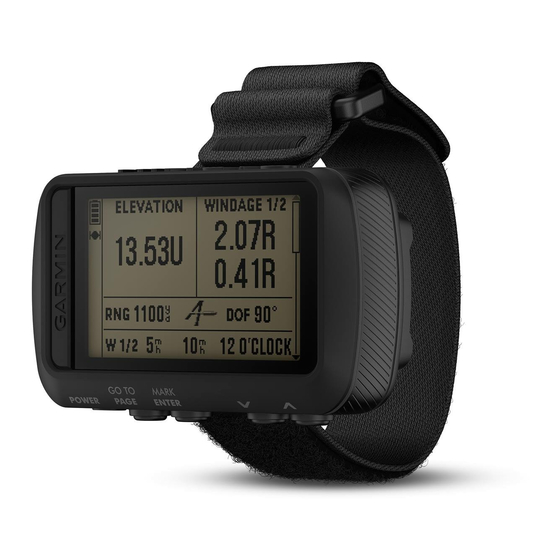Garmin FORETREX 701 BALLISTIC EDITION Owner's Manual - Page 8
Browse online or download pdf Owner's Manual for Watch Garmin FORETREX 701 BALLISTIC EDITION. Garmin FORETREX 701 BALLISTIC EDITION 30 pages. Ballistic edition
Also for Garmin FORETREX 701 BALLISTIC EDITION: Owner's Manual (18 pages)

Main Pages
You can select PAGE to scroll through the main pages. You can select ENTER to open the settings menu for
each page. You can select
Map page: The map page shows your position and heading on the map
As you travel, the position icon moves and leaves a track log (trail). Waypoint names and symbols appear on
the map. The device automatically rotates the map as you move so that waypoints always appear above your
position.
Compass page: The compass page guides you to your destination by displaying a compass and bearing pointer.
When navigating, the compass page displays the name of the location, the distance to the final destination,
the speed of travel, and a direction arrow in the compass ring. You can follow the arrow to navigate.
Elevation page: The elevation page shows your elevation.
Trip computer: The trip computer displays your current speed, average speed, maximum speed, trip odometer,
and other helpful statistics.
Menu page: The menu contains settings for waypoints, tracks, and routes, as well as other setup options.
The menu page also displays the current time and date at the top of the screen.
Applied Ballistics
page: This feature offers customized aiming solutions for long-range shooting
®
Ballistics,
page 5).
NOTE: This feature is available only on the Foretrex 701 device.
Status Icons
Status icons appear on the main pages. A flashing icon means the device is searching for a signal. A solid icon
means the signal was found or the sensor is connected.
4
or
to scroll through menus and pages and zoom in and out.
GPS status
Battery level
Heart rate monitor status
Speed and cadence sensor status
tempe
sensor status
™
Bluetooth
®
technology status
(Map Page,
page 5).
(Applied
Introduction
